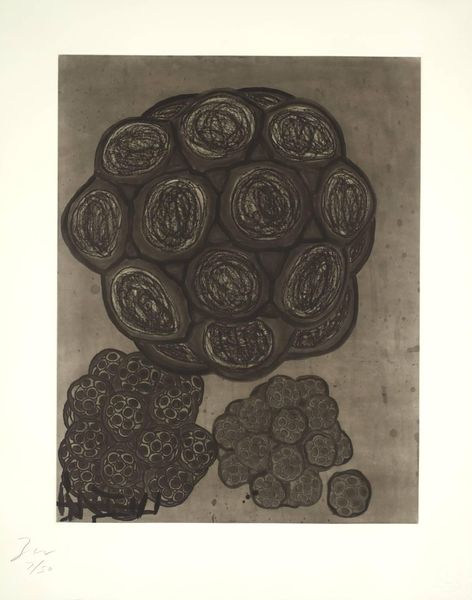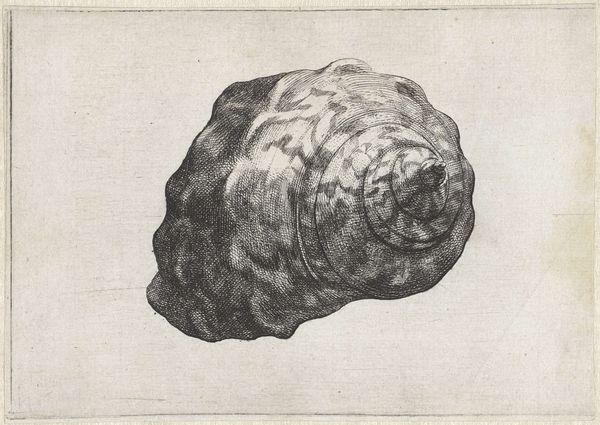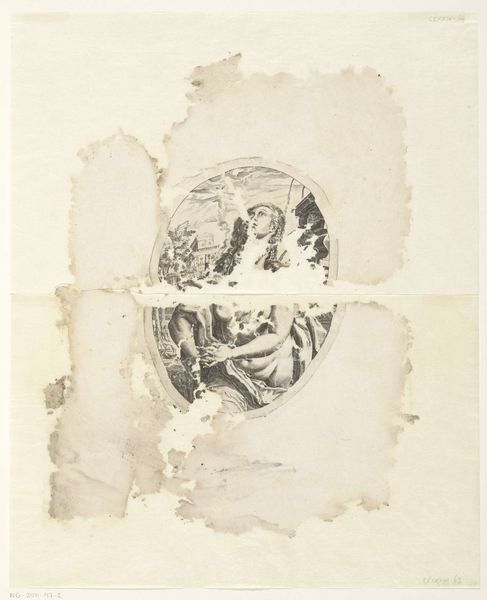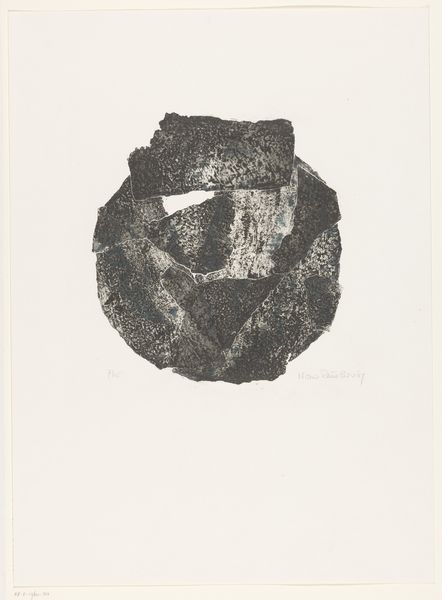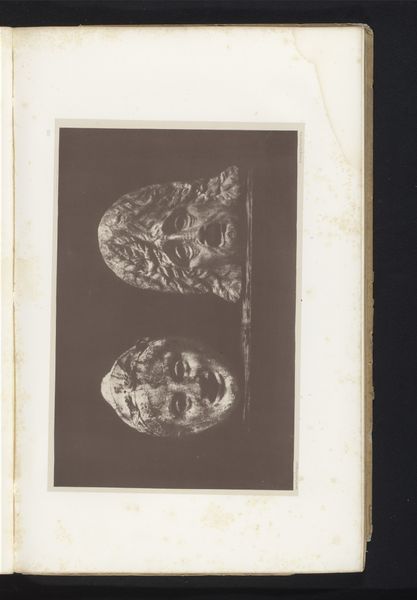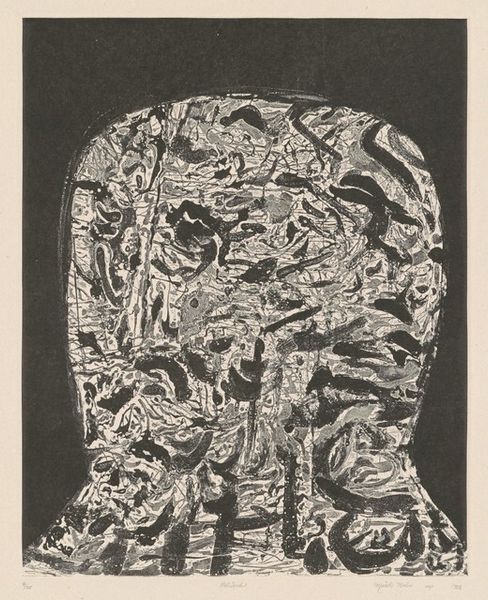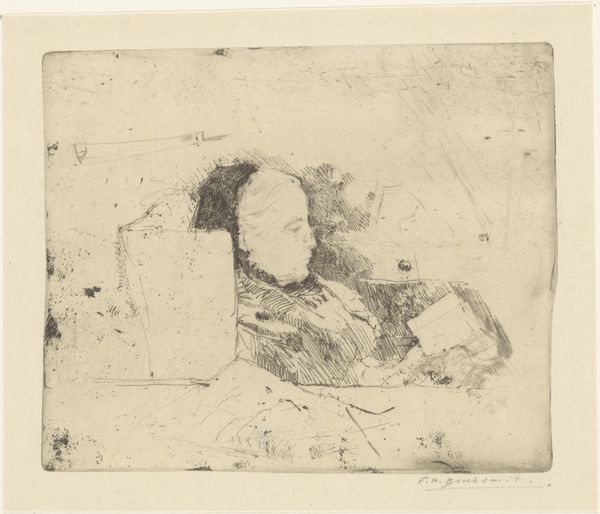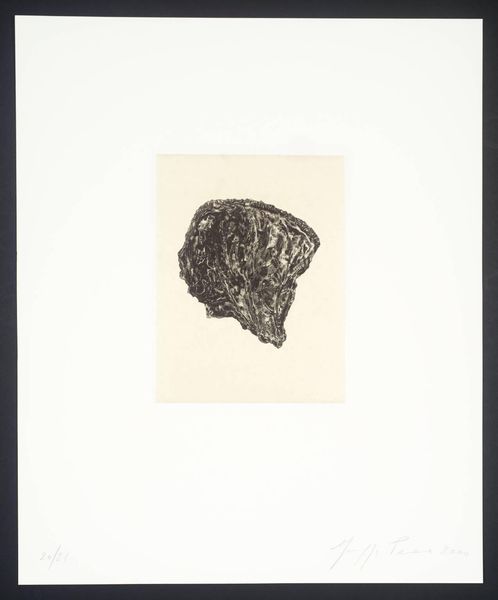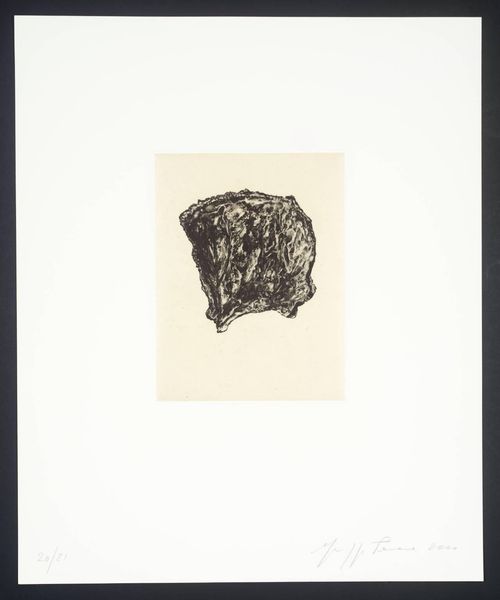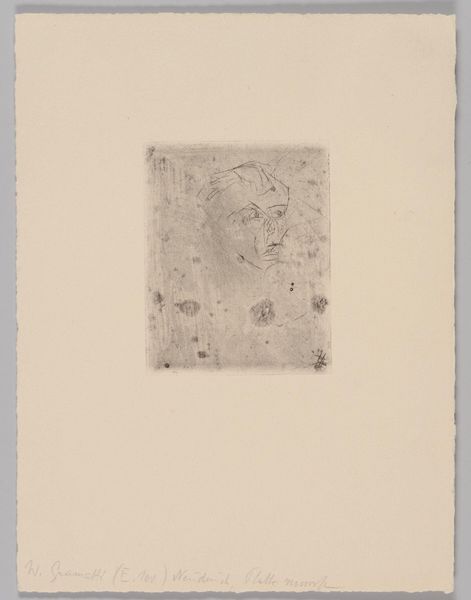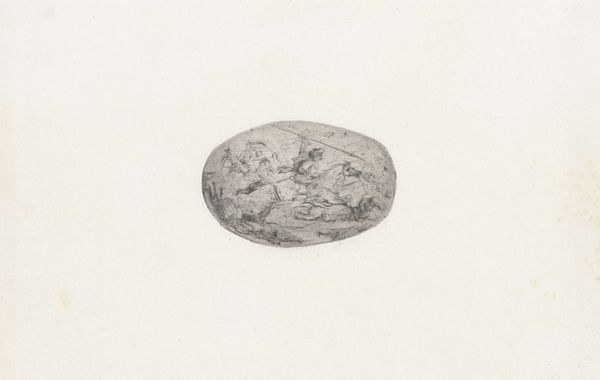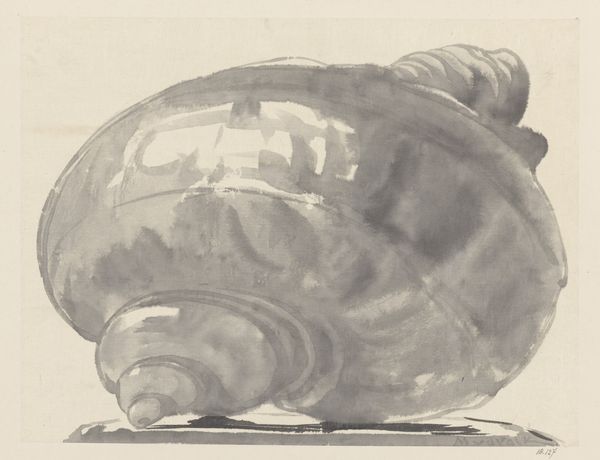
drawing, print, etching
#
drawing
#
baroque
# print
#
etching
#
momento-mori
Dimensions: height 74 mm, width 106 mm
Copyright: Rijks Museum: Open Domain
Editor: So, here we have "A Skull" by Hercules Segers, made sometime between 1615 and 1630. It’s an etching, currently at the Rijksmuseum. There's something very visceral about the way the skull is rendered, almost like looking at a geological formation rather than bone. What do you see in this piece? Curator: I see a powerful emblem of *memento mori*, deeply embedded in the cultural memory of the Baroque era. Segers, through his printmaking, offers more than just a depiction of death; it's a contemplation. Consider the symbolism: the skull, a universal signifier of mortality, yet rendered with such texture that it evokes the earth, the very substance we return to. Doesn’t it remind you of medieval morality plays or the *vanitas* paintings? Editor: Yes, I get that. It's that Baroque preoccupation with death and decay. I just find it striking how Segers has made this icon so...physical. It lacks that clean, academic feeling. Curator: Precisely! He uses the visual language to connect our ephemeral existence with enduring materials. The skull, a vessel of intellect and personality, reduced to raw form, forcing us to reflect on the fragility of those qualities. Think about what these skulls represented at that time. Does it represent disease, the transience of wealth, the certainty of the afterlife? Editor: I hadn't really thought about that layering of the message with cultural meanings, beyond the general 'remember you will die' feeling. So much more to consider. Curator: Art offers an intricate dance between cultural understanding and visceral experience, wouldn't you agree? We unearth layers, like archaeology. Editor: Definitely something I will keep in mind.
Comments
rijksmuseum about 2 years ago
⋮
The meticulousness with which the old, battered skull is depicted with a muddle of scratches suggests that Segers was here working ‘from life.’ The skull that served as the model is different to the one in the adjacent painting (Welch Family Private Collection, United States).
Join the conversation
Join millions of artists and users on Artera today and experience the ultimate creative platform.
